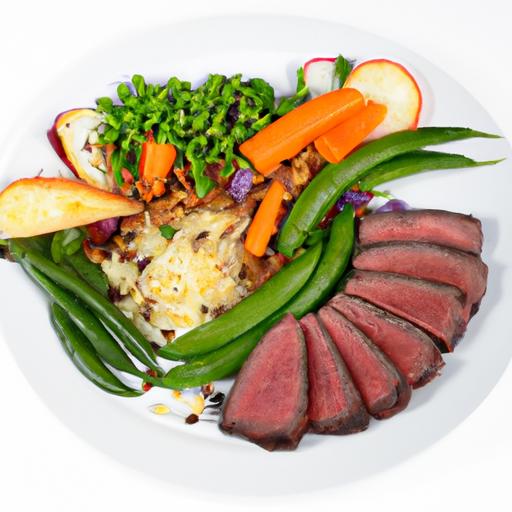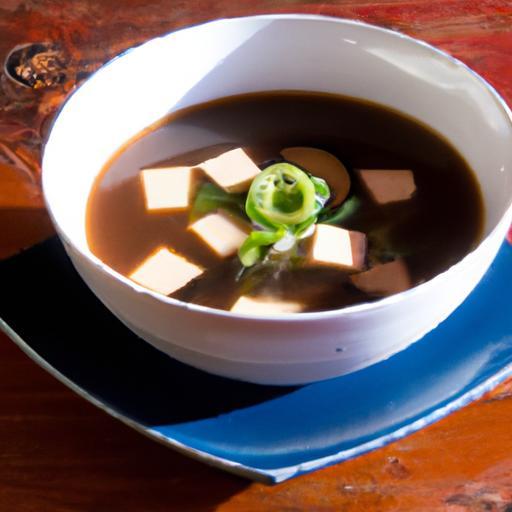In a world that never slows down, finding comfort in a bowl of warmth can be a small but powerful act of self-care. Enter vegan miso soup-a humble yet profoundly nourishing elixir that transcends its simple ingredients to deliver a rich tapestry of flavor and wellness. Whether you’re a seasoned plant-based eater or just curious about embracing more mindful meals, crafting vegan miso soup at home offers an easy gateway into a culinary tradition steeped in history and health. In this guide, we’ll unravel the art of making this cozy broth, blending ancient wisdom with modern simplicity, so you can sip your way to comfort with every mindful bowl.
Crafting comfort begins with selecting the freshest and most authentic ingredients for your vegan miso soup. Rooted deeply in Japanese tradition, this delicious broth relies on the delicate balance of flavors from naturally fermented miso paste and umami-rich components. As you embark on this culinary journey, know that each ingredient not only enriches the broth’s taste but also brings nutritional benefits that will soothe body and soul alike.
Prep and Cook Time
Preparation: 10 minutes
Cooking: 20 minutes
Total Time: 30 minutes
Yield
Serves 4 comfortably
Difficulty Level
Easy – Perfect for beginners and seasoned home cooks alike
Ingredients
- 6 cups filtered water
- 1/4 cup white or red miso paste (use a vegan-certified type like Hikari Miso)
- 1 sheet kombu (dried kelp), about 4-inch square
- 1/2 cup dried shiitake mushrooms
- 1 cup cubed firm tofu
- 1/2 cup sliced green onions (thinly sliced, white and green parts)
- 1 cup chopped baby spinach or kale
- 1 medium carrot, julienned
- 2 tbsp wakame seaweed (rehydrated in warm water for 10 minutes)
- 2 tbsp tamari or soy sauce (gluten-free if preferred)
- 1 tsp toasted sesame oil (optional, for depth and aroma)
- Freshly ground black pepper, to taste
Instructions
- Prepare the kombu dashi broth: In a large pot, combine the filtered water and kombu. Let soak for 30 minutes to an hour to allow the umami elements to infuse gently.
- Heat the kombu and shiitake mixture: Slowly bring the pot to a gentle simmer over medium-low heat. Just before boiling, remove the kombu (to avoid bitterness) and add the dried shiitake mushrooms. Simmer for 15 minutes, allowing mushrooms to soften and enrich the broth.
- Strain the broth: Using a fine mesh sieve, remove the mushrooms and set them aside for later use if desired. Return the broth to the pot.
- Incorporate miso paste: Place the miso paste in a small bowl. Ladle a cup of warm (not boiling) broth into the bowl and whisk until smooth. Then gently stir this mixture back into the pot. Avoid boiling the soup once miso is added to preserve beneficial probiotics and subtle flavors.
- Add tofu and vegetables: Carefully drop in the cubed tofu, rehydrated wakame, julienned carrot, and leafy greens. Cook for 3-5 minutes until the greens are tender but vibrant, and tofu is warmed through.
- Season and finish: Stir in the tamari and toasted sesame oil if using. Garnish with sliced green onions and freshly ground black pepper to taste. Serve immediately to enjoy the soup at its peak.
Chef’s Notes & Tips for Success
- Miso Variety Matters: White miso (shiro) is milder and sweeter, while red miso (aka) offers a deeper, savory intensity. Feel free to combine both for complexity.
- Rehydrating Seaweed: Soak wakame in warm water before using to expand its delicate texture and release flavor naturally.
- Avoid Boiling After Miso: Boiling the soup after adding miso can diminish flavor and destroy beneficial enzymes.
- Make-Ahead: Prepare the dashi broth in advance and refrigerate for up to 3 days. Add miso and delicate ingredients just before serving for freshness.
- Ingredient Swaps: Feel free to add enoki mushrooms, daikon radish, or substitute tofu with tempeh for varied textures.
Serving Suggestions
Present your vegan miso soup in rustic ceramic bowls to highlight its soothing nature. Garnish with a scattering of toasted sesame seeds, finely sliced nori strips, or a wedge of fresh lemon for a subtle brightness. Pair alongside steamed jasmine rice or a light seaweed salad to complete a well-rounded, comforting meal.
| Nutrient | Per Serving |
|---|---|
| Calories | 120 |
| Protein | 8g |
| Carbohydrates | 10g |
| Fat | 4g |

Q&A
Q&A: Crafting Comfort – A Simple Guide to Vegan Miso Soup
Q1: What makes miso soup a comforting food, especially for vegans?
A: Miso soup is the epitome of comfort-warm, nourishing, and deeply umami-rich. For vegans, it offers a soothing bowl packed with plant-based protein, probiotics, and essential nutrients, all without any animal products. Its simple ingredients create a harmonious balance of flavor and wellness, perfect for cozy moments.
Q2: What are the essential ingredients in vegan miso soup?
A: At its heart, vegan miso soup needs miso paste (fermented soybean paste), a gentle vegetable broth or kombu dashi (kelp-based stock), and tofu or seaweed for texture. From there, you can add sliced mushrooms, green onions, or tender leafy greens to elevate the soup’s flavor and nutrition.
Q3: How do you ensure the miso retains its benefits when cooking?
A: Miso is a living food packed with probiotics, so keep it away from boiling temperatures! After you simmer your broth and add veggies, remove the pot from heat, then whisk in the miso paste gently. This preserves the beneficial microbes and the soup’s signature mellow depth.
Q4: Can I customize vegan miso soup for different seasons or moods?
A: Absolutely! In spring, toss in fresh peas and spinach for brightness. Autumn calls for earthy mushrooms and roasted squash for a hearty twist. Feeling playful? Add a dash of grated ginger or a sprinkle of toasted sesame seeds. Miso soup is a canvas-your kitchen, the gallery.
Q5: What are some quick tips to make vegan miso soup a regular part of my meal routine?
A: Keep miso paste and kombu dashi stocked in your pantry for a quick assembly. Prep tofu and veggies ahead and store them in your fridge. When hunger strikes, simmer broth, add your prepped ingredients, soften gently, stir in miso, and voila-comfort in minutes!
Q6: Why is homemade vegan miso soup better than instant versions?
A: Homemade miso soup lets you control the ingredients, ensuring a cleaner, fresher sip without additives or excessive sodium. Plus, the ritual of crafting the soup itself invites mindfulness-a nourishing pause in a busy day, much more than just a quick meal.
Q7: Can I store leftover vegan miso soup?
A: You can store leftovers in the fridge for up to 2 days, but since miso’s probiotics are delicate, it’s best to keep the soup without miso mixed in. When reheating, warm the soup gently, then stir in fresh miso paste just before serving to maintain that rich, living flavor.
With this guide, crafting vegan miso soup becomes a delightful, comforting ritual-simple, flexible, and brimming with plant-powered goodness. Your cozy bowl awaits!
Concluding Remarks
As you ladle this warm, umami-rich vegan miso soup into your bowl, remember that comfort can be crafted with just a few thoughtful ingredients and a dash of patience. This humble soup, rooted in tradition yet wholly adaptable to plant-based living, invites you to slow down, savor each spoonful, and nourish both body and soul. Whether it’s a quiet night in or a midday boost, your kitchen now holds the simple secret to cozy, conscious comfort-one steaming bowl at a time.












